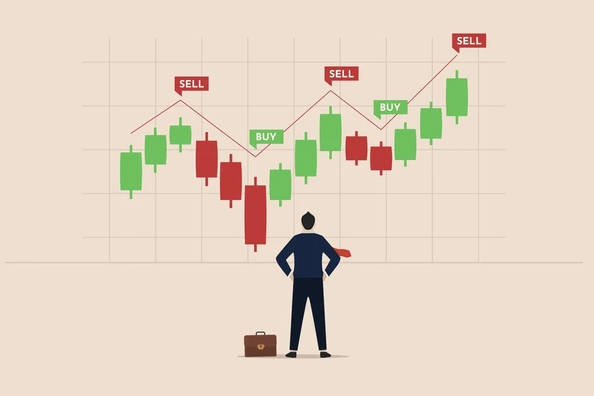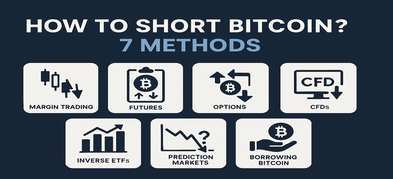Important Information
This website is managed by Ultima Markets’ international entities, and it’s important to emphasise that they are not subject to regulation by the FCA in the UK. Therefore, you must understand that you will not have the FCA’s protection when investing through this website – for example:
- You will not be guaranteed Negative Balance Protection
- You will not be protected by FCA’s leverage restrictions
- You will not have the right to settle disputes via the Financial Ombudsman Service (FOS)
- You will not be protected by Financial Services Compensation Scheme (FSCS)
- Any monies deposited will not be afforded the protection required under the FCA Client Assets Sourcebook. The level of protection for your funds will be determined by the regulations of the relevant local regulator.
Note: Ultima Markets is currently developing a dedicated website for UK clients and expects to onboard UK clients under FCA regulations in 2026.
If you would like to proceed and visit this website, you acknowledge and confirm the following:
- 1.The website is owned by Ultima Markets’ international entities and not by Ultima Markets UK Ltd, which is regulated by the FCA.
- 2.Ultima Markets Limited, or any of the Ultima Markets international entities, are neither based in the UK nor licensed by the FCA.
- 3.You are accessing the website at your own initiative and have not been solicited by Ultima Markets Limited in any way.
- 4.Investing through this website does not grant you the protections provided by the FCA.
- 5.Should you choose to invest through this website or with any of the international Ultima Markets entities, you will be subject to the rules and regulations of the relevant international regulatory authorities, not the FCA.
Ultima Markets wants to make it clear that we are duly licensed and authorised to offer the services and financial derivative products listed on our website. Individuals accessing this website and registering a trading account do so entirely of their own volition and without prior solicitation.
By confirming your decision to proceed with entering the website, you hereby affirm that this decision was solely initiated by you, and no solicitation has been made by any Ultima Markets entity.
I confirm my intention to proceed and enter this websiteGetting to know Bid Price vs Ask Price
In the world of trading, understanding the bid price vs ask price is crucial for making well-informed decisions. Every trade involves two essential prices: the bid price (the amount buyers are willing to pay) and the ask price (the amount sellers are asking for).
Whether you’re trading forex, stocks, or commodities, the bid-ask spread plays a pivotal role in determining your trading costs and execution. These prices reflect the ongoing interaction between buyers and sellers, indicating supply and demand in the market.
This article will delve into the meaning of these terms, how the bid-ask spread impacts your trades, and why it’s vital for optimising your trading strategies.
What is the Bid Price?

The bid price is the amount of money a buyer is willing to pay for a specific asset or instrument. Bid prices are set by buyers based on their willingness to pay and play a key role in establishing the market value of an asset. Essentially, it’s the price at which you can sell a particular asset. For instance, in the context of forex trading, if the bid price for EUR/USD is 1.2000, it means a buyer is willing to purchase the Euro for 1.2000 US dollars.
Understanding the bid price is essential for traders who are looking to exit a position or sell an asset, as this is the price at which they can do so. When an investor places a sell order, it is typically executed at the best available bid price.
Why Is the Bid Price Important?
Market Demand: The bid price reflects the demand for the asset, indicating how much buyers are willing to pay.
Sell Orders: When you decide to sell, your trade will be executed at the bid price.
What is the Ask Price?
The ask price, also known as the offer price, is the lowest possible price at which a seller is willing to sell a specific asset or instrument. In other words, it is the price at which you can buy an asset. For example, if the ask price for EUR/USD is 1.2050, it means a seller is asking for 1.2050 US dollars to sell one Euro (this is also known as the asking price).
The ask price reflects the market’s supply, as it shows the minimum price sellers are willing to accept.
The ask price is critical when you’re looking to enter a position or buy an asset, as it represents the price at which the market is willing to offer you the asset. Understanding the ask price is crucial for those looking to buy or sell securities efficiently.
Why Is the Ask Price Important?
Market Supply: The ask price reflects the supply side of the market, showing the minimum price at which sellers are willing to part with the asset.
Buy Orders: When you decide to buy, your order will be executed at the ask price.
Bid vs Ask: How They Work Together
You may ask, “Why are bid and ask prices important?” Well, together, they form the foundation of every market transaction. The bid-ask spread is the difference between the two prices and represents your transaction cost for entering or exiting a trade.
For example:
- Bid Price: 1.2000 (you sell at this price)
- Ask Price: 1.2050 (you buy at this price)
In this case, the spread is 0.0050 or 50 pips. The spread is important because it represents the transaction cost of entering or exiting a trade.
Bid Price vs Ask Price in Action

Let’s give you a practical example to understand this better. Suppose you’re trading the EUR/USD pair:
- Bid price = 1.2000
- Ask price = 1.2050
This gives you a bid-ask spread of 50 pips.
If you buy EUR/USD at the ask price of 1.2050 and the market moves to 1.2060, you’ll be in profit. However, if the price drops to 1.2040, you’ll be at a loss.
The key takeaway here is that to make a profit, the price needs to move in your favour by at least the size of the spread. Understanding this can help you assess how much movement is needed to cover your trading costs.
Why Bid and Ask Prices Matter
Now that we understand what bid and ask prices are, you may wonder, why do they matter?

Order Execution
When you buy, you pay the ask price, and when you sell, you receive the bid price. The bid-ask spread is a natural cost of trading that can impact your profits, especially in fast-moving markets. The bid price is always lower than the ask price in any market, reflecting the inherent cost of trading.
Market Conditions
The difference between the bid and ask price tells you a lot about the market’s liquidity.
- Tighter spreads suggest a highly liquid, active market with significant trading volume.
- Wider spreads can indicate lower liquidity or high volatility, as fewer participants are trading or market conditions are uncertain.
Planning Your Trades
Understanding bid and ask prices helps you:
- Control trade costs: Factor in the spread as part of your trade strategy, especially in markets with high volatility.
- Choose entry and exit points: Know when to buy at the ask and when to sell at the bid.
Conclusion
Understanding the bid price vs ask price and the bid-ask spread is essential for any trader looking to succeed in financial markets. The spread represents an inherent cost of trading, and knowing how it works can help you make smarter trading decisions, reduce costs, and improve your overall trading strategy.
By focusing on liquidity, volatility, and the overall market conditions, you can minimise the impact of the spread and execute more profitable trades. Remember to compare brokers to ensure you’re getting competitive spreads and use limit orders to have more control over your trade execution.
Key Takeaways
- By understanding these prices, you can plan smarter trades and reduce trading costs.
- Bid price = the price at which you can sell an asset.
- Ask price = the price at which you can buy an asset.
- The spread between the two represents your transaction cost.
Disclaimer: This content is provided for informational purposes only and does not constitute, and should not be construed as, financial, investment, or other professional advice. No statement or opinion contained here in should be considered a recommendation by Ultima Markets or the author regarding any specific investment product, strategy, or transaction. Readers are advised not to rely solely on this material when making investment decisions and should seek independent advice where appropriate.
























